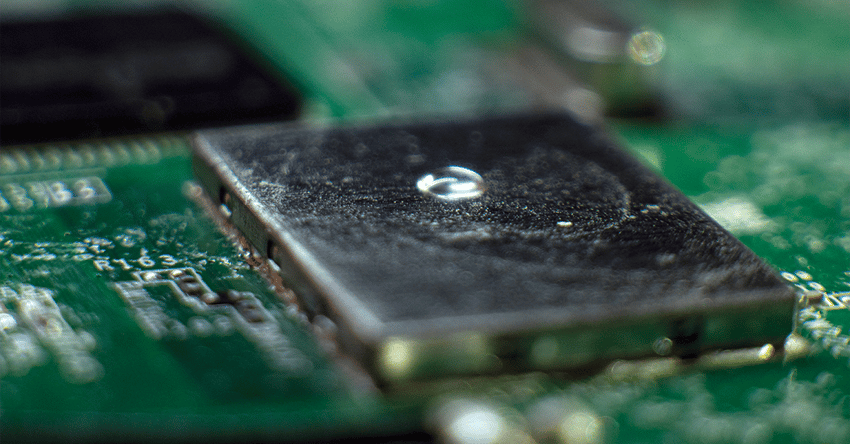Manufacturing processes that involve bonding, coating, sealing, printing, painting, laminating, or cleaning need a metric to measure the surface quality of the materials involved. Without such a metric, it is impossible to predict whether the adhesion process will be successful or if it's on the path to failure. Implementing an inspection process that quantitatively evaluates the state of the material surface as it moves through the production process gives manufacturers control over the adhesion process
Adhesion relies on a chemically amenable surface to be created and maintained throughout the production process. Adhesion is a chemical process that occurs at the uppermost molecular layers of the material surface. This delicate surface is affected by myriad variables that come into play at many points throughout the process and interact with the surface in distinct ways.
Every manufacturing process includes places where these variables have an opportunity to alter the material surface either intentionally through established steps or unintentionally through unnoticed factors. We call these places Critical Control Points. Surface quality needs to be quantified, tracked, and managed at each of these critical points. When a process is in place to do that work, then there will be no surprises once it comes time to do the final adhesion application.
The Critical Control Points will differ based on what the final product is (a cell phone is produced differently than a car engine), but the principles of how the inspection process helps ensure adhesion are the same.
Rethink your adhesion manufacturing processes with Surface Intelligence.
Inspect Early, Inspect Often
A surface quality inspection process can be implemented either before production has begun and a new design is being prepared to scale up to the production floor, or once a manufacturing process is in place. If possible, it is always preferable to have numeric specifications established before manufacturing is underway so you don't have to backtrack and re-write quality standards. This can also prevent rework, recalls, and scrap before they become an issue.
First, a standardized quality specification needs to be placed on all incoming material. This baseline builds a foundation for all other operations. Insisting on consistent levels of cleanliness on incoming material and being able to validate it with a numerical value allows for supplier accountability and efficiency of cleaning processes. If cleaning and activation steps need to constantly be re-calibrated for wildly differing surface states coming into the facility, then time and money are wasted making these adjustments.
Next, measure the surface quality before and after every Critical Control Point. Put a number on the surface quality before a part goes into storage and when it comes out. Put a number on it before it goes into an industrial wash bath and after. Put a number on it before it gets abraded and after. No matter what the operation is, in order to understand how much that surface is being altered, it is imperative to put it on a scale and track the change.
Inspect in Order to Understand
When a surface quality inspection process is in place, manufacturers get a complete picture of exactly what is being accomplished by the steps they currently have or are planning to have.
At Brighton Science, a common conversation with some manufacturers goes something like this:
“What kind of cleaning or treatment of your material are you employing (or planning on employing)?”
“We wipe the surface with IPA (isopropyl alcohol).”
“Ah, okay, what is it that you are trying to remove from the surface with this step?”
“Well we use a silicone mold release on our molded parts that needs to be cleaned off.”
“Alright, well, silicone is not soluble in alcohol so it is most likely not having the effect you are hoping for.”
Measuring the surface before and after a step like an IPA wipe could reveal that it isn’t altering the surface as expected and may not be getting the job done.
Once the surface quality is examined at each Critical Control Point, then analysis can be done to ensure that the best cleaning and treatment steps are being implemented. A process optimization study can be done to characterize exactly what parameters need to be set at each Critical Control Point so the material surface remains as controlled as possible throughout the whole production process.
Get hands-on with your surface cleanliness with the Surface Analyst 5001.
As illustrated above, it is important to design cleaning processes around specific contaminants and applications. In order to know what particular treatment, cleaning, and preparation steps are necessary (and which ones might be superfluous), it is crucial to understand the production process as a series of steps that build on one another and change the material surface in measurable and identifiable ways.
Learn more about what verification can do for your manufacturing process by downloading the “Predictable Adhesion in Manufacturing Through Process Verification” eBook. Consistent and reliable adhesion is possible when the proper management processes are in place.


